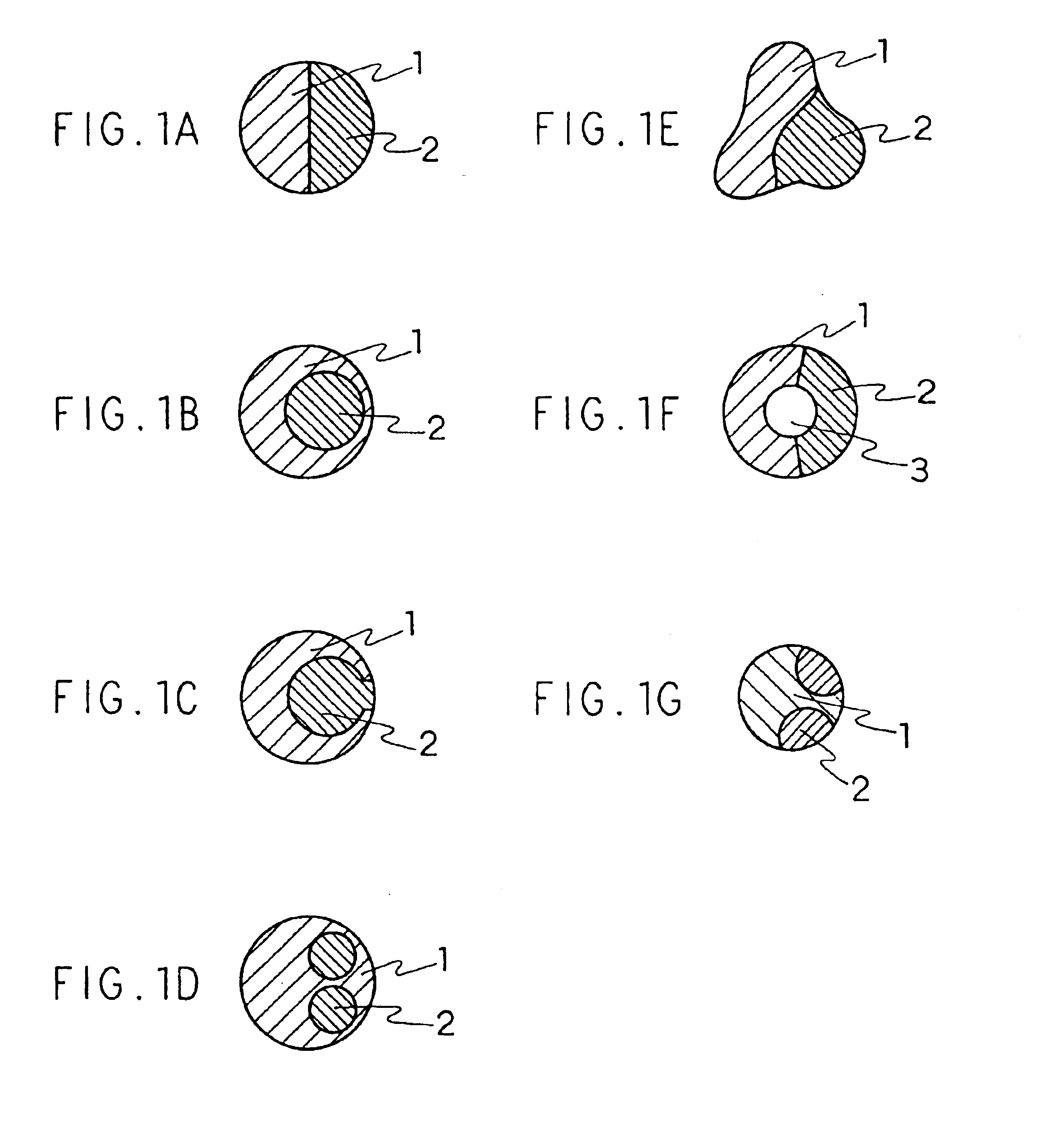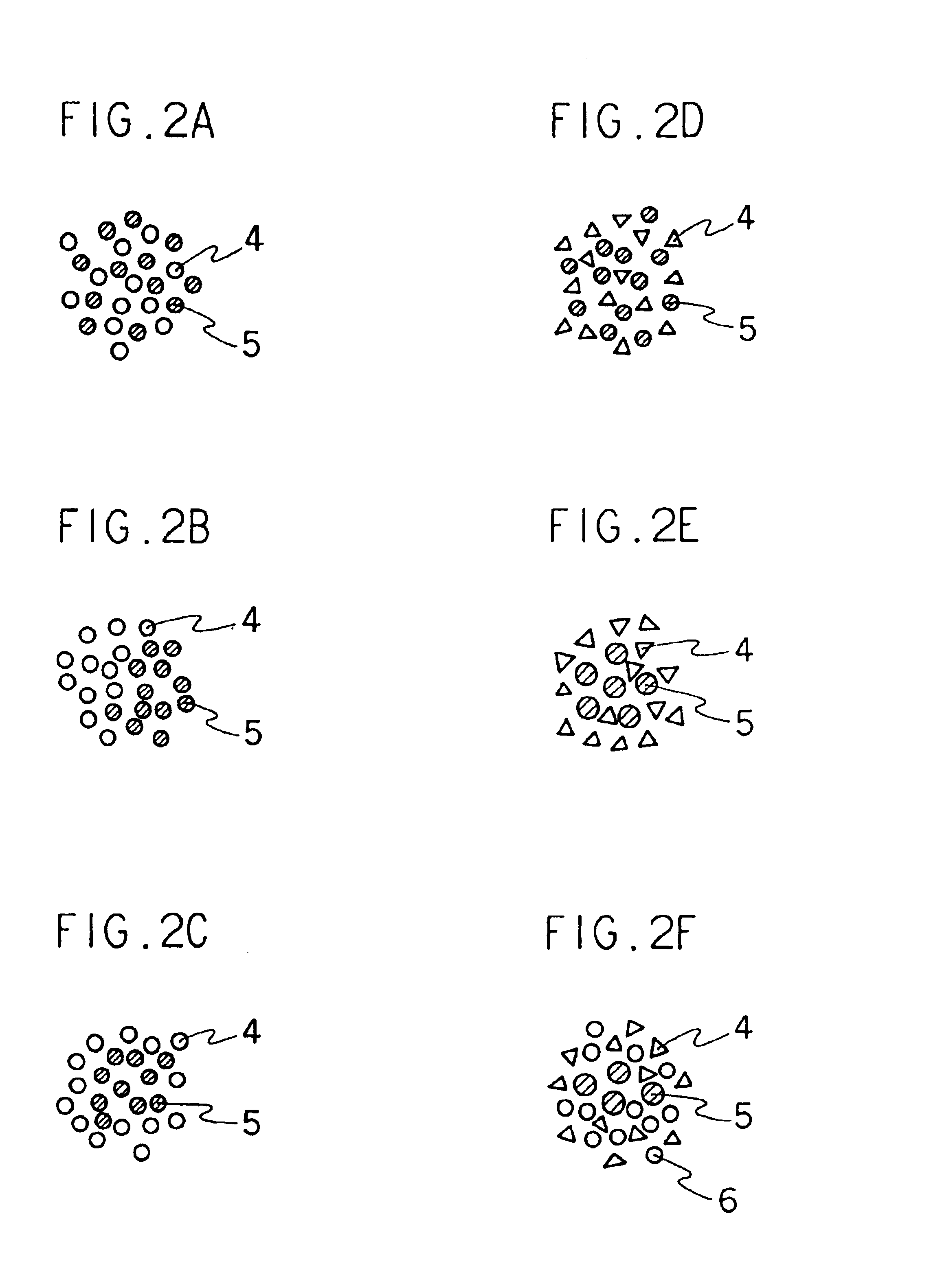Spontaneously degradable fibers and goods made thereof
a technology of spontaneous degradable aliphatic polyester fibers and fibers, which is applied in the field of fibers, can solve the problems of large amount of heat, slow degradation rate of conventional synthetic fibers made of synthetic resins, and inability to meet the needs of natural environment, and achieve the effect of convenient division
- Summary
- Abstract
- Description
- Claims
- Application Information
AI Technical Summary
Benefits of technology
Problems solved by technology
Method used
Image
Examples
example 1
Three parts of polyethylene glycol (PEG) having a molecular weight of 8000 and containing hydroxyl groups at the both molecular ends, 98 parts of L-lactide, 100 ppm of tin octylate and 0.1 part of Irganox 1010, i.e. an antioxidant produced by Ciba Geigy Corp. were mixed, and then polymerized by melting and stirring in a nitrogen atmosphere at 190° C. for 12 minutes by a twin-screw extruder. Then after cooling and forming into chips, the chips were treated (solid phase polymerization) in a nitrogen atmosphere at 140° C. for four hours to give a block copolymer P1 of polylactic acid and PEG. The polymer P1 had a molecular weight of 153000, a content of a PEG component of about 3%, a melting point of 174° C. and had a heat of fusion of 55 J / g when sufficiently orientated and crystallized. Further a polymer P2 was obtained in the same manner as in the polymer P1 except that a mixture of 95.5 parts of L-lactide and 2.5 parts of D-lactide was used as the lactide. The polymer P2 had a mole...
example 2
A polymer P5 was prepared in the same manner as in the preparation of the polymer P1 of Example 1 except that instead of the PEG, 30 parts of polybutylene succinate having a molecular weight of 127000 and containing hydroxyl group at the molecular end was used. The polymer P5 had a molecular weight of 129000, a melting point of 162° C. and a heat of fusion of 35 J / g.
A polymer P6 was prepared in the same manner as in the polymer P1 except that instead of the PEG, 10 parts of polybutylene succinate having a molecular weight of 127000 and containing hydroxyl group at the molecular end and instead of the L-lactide, 88.5 parts of L-lactide and 2.52 parts of D-lactide were used. The polymer P6 had a molecular weight of 134000, a melting point of 151° C. and a heat of fusion of 26 J / g.
A drawn yarn F3 was produced in the same manner as in the drawn yarn F1 of Example 1 by using the polymers P1 and P5. The drawn yarn F3 had a tenacity of 4.7 g / d, an elongation of 28% and a crimp elongation o...
example 3
The block copolymer P1 of polylactic acid and PEG was prepared in the same manner as in Example 1. The polymer P1 was melted by a screw extruder of 230° C., and spun out through an orifice of 225° C. having a diameter of 0.2 mm. With cooling in air and oiling, the spun filament was wound at a speed of 1500 m / min, drawn at 80° C. in a drawing ratio of 4.5 and heat-treated at 110° C. under a tension to give a drawn yarn A1 of 40 deniers / 12 filaments. The drawn yarn A1 had a tenacity of 4.5 g / d, an elongation of 29% and a shrinkage of 12% in boiling water.
Further the polymer P2 was prepared in the same manner as in Example 1. The polymer P2 was melted by a screw extruder of 220° C., and spun out through an orifice of 225° C. having a 0.2 mm diameter. With cooling in air and oiling, the spun filament was wound at a speed of 1500 m / min, drawn at 80° C. in a drawing ratio of 4.5 to give a drawn yarn B1 of 60 deniers / 12 filaments without heat-treating. The drawn yarn B1 had a tenacity of 4...
PUM
| Property | Measurement | Unit |
|---|---|---|
| Temperature | aaaaa | aaaaa |
| Percent by mass | aaaaa | aaaaa |
Abstract
Description
Claims
Application Information
 Login to View More
Login to View More - R&D
- Intellectual Property
- Life Sciences
- Materials
- Tech Scout
- Unparalleled Data Quality
- Higher Quality Content
- 60% Fewer Hallucinations
Browse by: Latest US Patents, China's latest patents, Technical Efficacy Thesaurus, Application Domain, Technology Topic, Popular Technical Reports.
© 2025 PatSnap. All rights reserved.Legal|Privacy policy|Modern Slavery Act Transparency Statement|Sitemap|About US| Contact US: help@patsnap.com



